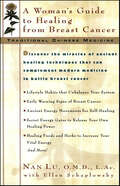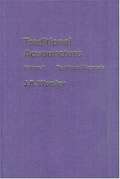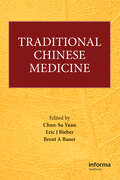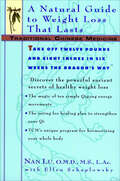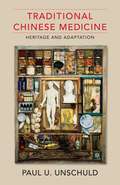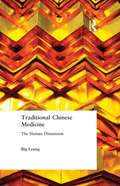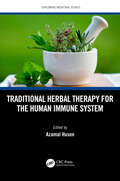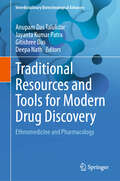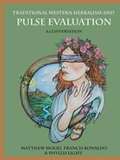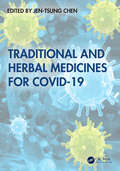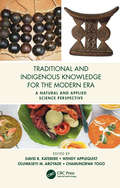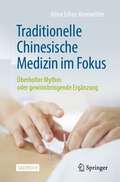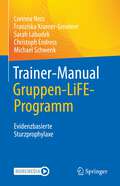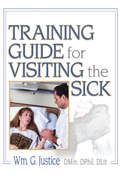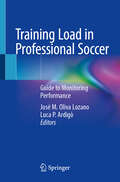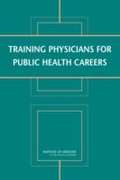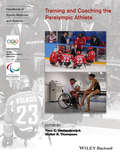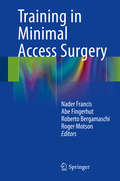- Table View
- List View
Traditioal Chinese Medicine: A Woman's Guide to Healing From Breast Cancer (Traditional Chinese Medicine)
by Nan Lu Ellen SchaplowskyDiscover The Power Of Ancient WisdomFor centuries , Traditional Chinese Medicine has helped millions of cancer patients in China, specializing in reducing the risk of breast cancer and healing it by identifying and treating its root cause. Chinese medicine offers a broad range of time-tested, natural, safe, self-healing treating that can complement prevailing Western cancer treatments.Traditional Chinese Medicine provides a nine-point healing guide that can be individually customized for women diagnosed with breast cancer; those about to undergo surgery, chemotherapy or radiation; breast cancer survivors who want to prevent recurrence, and any woman looking for serious prevention techniques. With his training, Dr. Nan Lu revives the ancient healing wisdom of traditional Chinese medicine --Early warning signs from your bodyAncient self-healing evergy movementsHealing, strengthening foods and ancient techniques to strengthen you before surgeryHow to manage your health during chemotherapy or radiationWhy and how to create a new Traditional Chinese Medicine lifestyle that addresses the root cause of breast cancer...and much more!
Traditional Acupuncture: Traditional Diagnosis
by J. R. WorsleyThe Art of Diagnosis, The Skills of Diagnosis, The Consultation, The Physical Examination, Special Considerations.
Traditional Chinese Medicine
by Brent A. Bauer Eric J. Bieber Chun-Su YuanThe authors of the Textbook of Complementary and Alternative Medicine present practitioners, physicians, and allied health workers with detailed material for a wide ranging understanding of what Traditional Chinese Medicine can offer.
Traditional Chinese Medicine and Diseases: An Omics Big-data Mining Perspective (Translational Bioinformatics #18)
by Kang NingThis book focuses on the multi-omics big-data integration, the data-mining techniques and the cutting-edge omics researches in principles and applications for a deep understanding of Traditional Chinese Medicine (TCM) and diseases from the following aspects: (1) Basics about multi-omics data and analytical methods for TCM and diseases. (2) The needs of omics studies in TCM researches, and the basic background of omics research in TCM and disease. (3) Better understanding of the multi-omics big-data integration techniques. (4) Better understanding of the multi-omics big-data mining techniques, as well as with different applications, for most insights from these omics data for TCM and disease researches. (5) TCM preparation quality control for checking both prescribed and unexpected ingredients including biological and chemical ingredients. (6) TCM preparation source tracking. (7) TCM preparation network pharmacology analysis. (8) TCM analysis data resources, web services, and visualizations. (9) TCM geoherbalism examination and authentic TCM identification. Traditional Chinese Medicine has been in existence for several thousands of years, and only in recent tens of years have we realized that the researches on TCM could be profoundly boosted by the omics technologies. Devised as a book on TCM and disease researches in the omics age, this book has put the focus on data integration and data mining methods for multi-omics researches, which will be explained in detail and with supportive examples the “What”, “Why” and “How” of omics on TCM related researches. It is an attempt to bridge the gap between TCM related multi-omics big data, and the data-mining techniques, for best practice of contemporary bioinformatics and in-depth insights on the TCM related questions.
Traditional Chinese Medicine: A Natural Guide to Weight Loss That Lasts
by Nan Lu Ellen SchaplowskyThe Dragon's WayTo Natural, Healthy, Lasting Weight LossHere at last is the secret to taking off pounds and inches and keeping them off for life. Unlike popular "miracle" diet programs and products, The Dragon's Way addresses the root cause of your weight problems and offers a remarkable six-week program that shows you how to reach your optimum weight and stay there. The Dragon's Way is based on Traditional Chinese Medicine (TCM) theories that have been practiced for thousands of years. Today billions of people worldwide benefit from this medical system. The Dragon's Way is not about food restrictions, apetite suppression, or vigorous exercising. It's about treating the whole person instead of focusing on weight; about how to use ancient energy movements to awaken your healing ability; about showing you how to use food as a healing tool; and about helping you achieve the harmony and balance in your own body that can result in natural, healthy, permanent weight loss.Discover:How the Traditional Chinese Medicine approach differs from diet programsHow this TCM program makes you feel better physically and emotionallyHow stress causes weight problemsHow food cravings signal body needsWhy depriving your body of food leads to further weight gainHealing foods and recipes that help you eliminate excess water and body fatHerbal supplements and energy movements that encourage body harmony and help you avoid excess wieghtAdditional health benefits beyond wieght lossAnd Much More!
Traditional Chinese Medicine: Heritage and Adaptation
by Paul U. UnschuldA leading authority explains the ideas and practice of Chinese medicine from its beginnings in antiquity to today. Paul U. Unschuld describes medicine's close connection with culture and politics throughout Chinese history. He brings together texts, techniques, and worldviews to understand changing Chinese attitudes toward healing and the significance of traditional Chinese medicine in both China and the Western world.Unschuld reveals the emergence of a Chinese medical tradition built around a new understanding of the human being, considering beliefs in the influence of cosmology, numerology, and the supernatural on the health of the living. He describes the variety of therapeutic approaches in Chinese culture, the history of pharmacology and techniques such as acupuncture, and the global exchange of medical knowledge. Insights are offered into the twentieth-century decline of traditional medicine, as military defeats caused reformers and revolutionaries to import medical knowledge as part of the construction of a new China. Unschuld also recounts the reception of traditional Chinese medicine in the West since the 1970s, where it is often considered an alternative to Western medicine at the same time as China seeks to incorporate elements of its medical traditions into a scientific framework. This concise and compelling introduction to medical thought and history suggests that Chinese medicine is also a guide to Chinese civilization.
Traditional Chinese Medicine: The Human Dimension
by Big LeungTraditional Chinese Medicine (TCM) is a great treasure of China's ancient history and culture. Written for health professionals, researchers, social scientists and educators, this book elaborates a view that TCM is embodied in diverse and complex human dimensions and meanings in Chinese culture. Encircling Cultural Meaning includes the TCM concept 'Qi', the holistic approach, which embodies culture in medicine. The book identifies intricate human dimensions of TCM in: the life stages of youth, adulthood and old age, as family connections, as identity, as balancing /harmonising life, as complementary and knowledge transmission roles. In particular, TCM is seen through the lens of leadership - as refining human relationships, as self, as moral practice, as good management practice, and as embracing the cultural environment. Underlying these categories, shared meanings are revealed, as well as core values and health beliefs in Chinese culture. The complex human dimensions of TCM are shown to be deeply rooted in social, cultural and historical contexts in the Chinese diaspora. The Spirit of Chinese Culture: its Human Centredness Conceptions of Leadership in Traditional Chinese Medicine TCM for Youth, Adults and the Elderly TCM in Family Connectedness Chinese Identity, Body Image and Gender Balance/Harmony/Knowledge Underlying Beliefs and Roles Social-Cultural Significance The author draws from and extends her PhD research on lived Chinese experiences and conceptions of TCM across diverse individuals, populations, two focus groups in Australia, and three focus groups in Macau and Hong Kong. Encircling Cultural Meaning reveals rich and profound values in Chinese culture manifested at all levels of life, including: the reciprocal care of filial piety, trust, respect, considerations for others, the quest for self understanding, and the strive for peace and harmony. These inner virtues in human relationships offers a soothing refuge and solution to the modern world which is often punctuated with imbalance, the overdependence on material acquisition, distrust, violence, and man's inhumanity towards man.
Traditional Herbal Therapy for the Human Immune System (Exploring Medicinal Plants)
by Azamal HusenDrawing on indigenous and scientific knowledge of medicinal plants, Traditional Herbal Therapy for the Human Immune System presents the protective and therapeutic potential of plant-based drinks, supplements, nutraceuticals, synergy food, superfoods, and other products. Medicinal plants and their products can affect the immune system and act as immunomodulators. Medicinal plants are popularly used in folk medicine to accelerate the human immune defence and improve body reactions against infectious or exogenous injuries, as well as to suppress the abnormal immune response occurring in immune disorders. This book explains how medicinal plants can act as a source of vitamins and improve body functions such as enhanced oxygen circulation, maintained blood pressure and improved mood. It also outlines how specific properties of certain plants can help boost the immune system of humans with cancer, HIV, and COVID-19. Key features: Provides specific information on how to accelerate and or fortify the human immune system by using medicinal plants. Presents scientific understanding of herbs, shrubs, climbers and trees and their potential uses in conventional and herbal medicine systems. Discusses the specific role of herbal plants that act as antiviral and antibacterial agents and offer boosted immunity for cancer, H1N1 virus, relieving swine flu, HIV and COVID-19 patients. Part of the Exploring Medicinal Plants series, this book is useful for researchers and students, as well as policy makers and people working in industry, who have an interest in plant-derived medications.
Traditional Home and Herbal Remedies
by Jan de VriesToday, more and more people are beginning to rediscover the healing powers of roots and plants. Indeed, some of the most frequently prescribed and powerful drugs are based on plant extracts.Jan de Vries has researched as far back as the twelfth century and has recorded the folk wisdom of various countries, learning from them the popular remedies passed on by their forebears.In Traditional Home and Herbal Remedies, he shares some of these secrets with his readers. Everyone who agrees with his philosophy that nature has a way to help every illness will find this book an invaluable source of information and encouragement.
Traditional Medicinal Plants and Malaria (Traditional Herbal Medicines for Modern Times #4)
by Merlin Willcox; Gerard Bodeker; Philippe RasoanaivoMalaria is an increasing worldwide threat, with more than three hundred million infections and one million deaths every year. The worlds poorest are the worst affected, and many treat themselves with traditional herbal medicines. These are often more available and affordable, and sometimes are perceived as more effective than conventional antimala
Traditional Medicine in the Irish Literary Revival: The Works of W.B. Yeats, Augusta Gregory, and J. M. Synge (New Directions in Irish and Irish American Literature)
by Holly May Walker-DunseithThis book explores representations of traditional medicine and healing practices in Irish Revival-era literature spanning from the late nineteenth century to the early twentieth century. Specifically, the book focuses on the work of William Butler Yeats, Lady Augusta Gregory, and John Millington Synge. The author examines folk medical practices and analyses how folk medicine appears in literature, bringing to light fresh contexts and materials including diaries, letters, folklore collections, and medical texts. By writing the first book to explore the place of traditional medicine in Irish literature, Walker-Dunseith sheds light on a distinctive area of Irish life and practice that gestures towards the possibility of a culture and nation in the act of healing itself and questioning nationalistic discourses.
Traditional Medicines for Modern Times: Antidiabetic Plants (Traditional Herbal Medicines for Modern Times)
by Amala SoumyanathThe increasing prevalence of diabetes mellitus world-wide is an issue of major socio-economic concern. Scientific interest in plant-derived medicine is steadily rising, yet there is often a wide disparity in the caliber of information available. A detailed compilation of scientific information from across the globe, Traditional Medicines for Modern
Traditional Resources and Tools for Modern Drug Discovery: Ethnomedicine and Pharmacology (Interdisciplinary Biotechnological Advances)
by Jayanta Kumar Patra Gitishree Das Anupam Das Talukdar Deepa NathThis book provides perspectives on the combinatorial approach of plant-based compounds for drug discovery to achieve better disease-curing outcomes introducing the evolution of ethnobotany and traditional medicine in modern drug development. It covers the biotechnological interventions for the identification and screening of compounds and their optimization to enhance affinity, selectivity, bioavailability, and metabolic stability. While overviewing how essential compounds are successfully identified from herbal/ medicinal plants and utilized in the form of effective drugs which eventually have helped in combating long-term diseases in humans, the book also provides a better understanding of how infection and the diseases caused are regulated at the molecular and physiological stages. The book also highlights the importance of bioactive compounds in modern drug discovery and the perspectives for a potential industrial application. The chapters are developed by eminent subject experts with due care and clarity and cover an up-to-date literature review with relevant illustrations. The book would cater to the needs of undergraduate and graduate students, researchers, and scientists, and may attract the attention of pharmaceutical companies/industrialists and health policymakers.
Traditional Western Herbalism and Pulse Evaluation: A Conversation
by Matthew Wood Phyllis D. Light Francis Bonaldo BegnochePulse Evaluation is a pacesetter in the field of herbal and holistic medicine. It sheds new light on herbalism, holistic evaluation, and the age-old art of pulse-reading. "This is a monumental work, and an amazing contribution to our literature. I am always and adamantly of the mind that one's personal experience is of paramount importance, so there was a lot that I would not dream of contesting in your work. As you rightly state, nothing means anything divorced from the context of the patient's whole gestalt. There are many qualities you describe that I will be looking for in the future, or have felt and will reconsider the interpretation. Time will confirm or correct the three of you as the conversation unfolds. I am very pleased to meet Dr. Floyer and invite others to do the same." Brandt Stickley, L. Ac. Assistant Professor of Classical Chinese Medicine, National College of Naturopathic Medicine
Traditional and Complementary Medicines: Are they Ethical for Humans, Animals and the Environment? (SpringerBriefs in Philosophy)
by Kate ChatfieldThis book provides a systematic analysis of the ethical implications of traditional and complementary medicine (T&CM), focusing on pragmatic solutions. The author uses a bioethical methodology called the “Ethical Matrix,” to consider the impact of T&CM use for animals and the environment as well as for humans.A systematic search of the literature reveals that most published ethical concerns are related to the safety of T&CM use for humans. However, application of the Ethical Matrix demonstrates that the ethical implications for T&CM use are much broader. In this book, the author analyses the most serious implications, including adverse events related to homeopathy, the use of animals in T&CM products, and the impact of herbal medicine on the environment. Comparisons with the ethical implications of conventional biomedicine help readers to contextualise debate, and highlight aspects that may be unique to T&CM. Globally, many high-level health policy makers promote T&CM as an accessible and affordable healthcare option. However, their use is considered by some to be a waste of resources, unscientific, and unethical. Offering a frank analysis of this largely ignored field of healthcare ethics, this book is both timely and essential. It helps patients, policy makers, practitioners, researchers, and students gain the knowledge they need to make more informed decisions.
Traditional and Herbal Medicines for COVID-19
by Jen-Tsung ChenTraditional and Herbal Medicines for COVID-19 explores promising ways to manage COVID-19, post-COVID, and long-COVID conditions. The management plans are based on anti-virus activity, anti-inflammatory activity, and diverse health benefits of traditional and herbal medicines through a comprehensive summarization of scientific literature by experts in the field. It presents views of the origin of SARS-CoV-2 and emerging variants and pathogenesis, and it proposes renewed strategies of diagnostics, vaccines, and therapies.Features Provides an in-depth analysis to illustrate the impact of traditional and herbal medicines on crucial protein targets responsible for the progress of SARS-CoV-2 infection and symptoms. Presents knowledge of SARS-CoV-2 and variants. Explores strategies to manage COVID-19, post-COVID, and long-COVID by applying traditional herbal medicines. Illustrates molecular aspects of anti-coronavirus activity from traditional herbal medicines. Features information on molecular mechanisms of target proteins involving COVID-19 infection and symptoms. Traditional and Herbal Medicines for COVID-19 serves as an ideal reference for researchers and experts in the fields of virology, epidemiology, drug discovery, and traditional herbal medicine. This book aligns with supporting the Sustainable Development Goals (SDGs) 2030 by the United Nations to establish “Good Health and Well-Being.”
Traditional and Indigenous Knowledge Systems in the Modern Era: A Natural and Applied Science Perspective
by David R. Katerere Wendy Applequist Oluwaseyi M. Aboyade Chamunorwa TogoWhile there is talk of the Fourth Industrial Revolution, old and new challenges bedevil the world – climate change, nutrition, and health poverty being at the top of the list. In seeking solutions to these and other problems which afflict the modern era, it is worthwhile to look into our collective past, to the traditions and knowledges of our ancestors. Such knowledge continues to exist in many parts of the world, though now marginalized by homogenous, Eurocentric ontolology and epistemology. This book presents a compilation of reviews, case studies, and primary research attempting to locate the utility of traditional and Indigenous Knowledges in an increasingly complex world. It assembles chapter authors from across the world to tackle topics ranging from traditional knowledge-based innovations and commercialization, traditional medicine systems as practiced around the world, ethnoveterinary practices, and food innovation to traditional governance and leadership systems, among others. This book is an important resource for policymakers; scholars and researchers of cultural studies, leadership, governance, ethnobotany, anthropology, plant genetic resources and technology innovation; and readers interested in the history of knowledge and culture, as well as cultural activists and political scientists. Features: Unique combination of social science and anthropological aspects with natural science perspectives Includes summaries aimed at policymakers to immediately see what would be relevant to their work Combines case studies illuminating important lessons learned with reviews and primary data Multidisciplinary in the scope of the topics tackled and assemblage of contributors Global footprint with contributions from Africa, Europe, North America, Asia, and the West Indies David R. Katerere, Department of Pharmaceutical Sciences, Tshwane University of Technology, South Africa Wendy Applequist, William L. Brown Center, Missouri Botanical Garden, St Louis, Missouri Oluwaseyi M. Aboyade, Department of Pharmaceutical Sciences, Tshwane University of Technology, South Africa and Nutritica SA, The Innovation Hub, Pretoria, South Africa Chamunorwa Togo, The Innovation Hub, Pretoria, South Africa
Traditional, Complementary and Alternative Medicine and Cancer Care: An International Analysis of Grassroots Integration
by John Chatwin Alex Broom Philip ToveyDrawing on comparative fieldwork in the UK, Pakistan and Australia, this book provides the first systematic assessment of pathways and access to CAM and how it is used in health practice and by individuals with cancer. Giving fresh and invaluable insights into how differing health and societal structures influence the use complementary and alternative medicine, the book explores: the empirical, theoretical, and policy context for the study of CAM/TM and cancer the history and character of the eight support groups in which fieldwork took place in the UK, Australia and Pakistan the nature and structure of patient support groups' history, affiliation and evolution how groups function on a day-to-day basis the extent to which what is being offered in these CAM-oriented groups is in any way innovative and challenging to the therapeutic and organisational mainstream the value of sociological work in the field which is not tied to immediate and narrow policy objectives. This is an essential resource for those studying complementary and alternative medicine sociologically, to those involved in the provision of cancer care on a day-to-day basis, and to those looking to establish a more informed (evidence-based) policy.
Traditionelle Chinesische Medizin im Fokus: Überholter Mythos oder gewinnbringende Ergänzung
by Alina Erbas-KronwitterDie Traditionelle Chinesische Medizin (TCM) erfreut sich großer Beliebtheit. Ob bei einfachen Erkältungen oder schweren Erkrankungen - in Deutschland vertrauen ihr immer mehr Patient:innen. Dabei liegen für die wenigsten Therapien, sei es Akupunktur, chinesische Arzneimitteltherapie oder für Ernährungslehre, eindeutige Wirksamkeitsbelege vor. Ist diese breite Anwendung aus dem Blickwinkel der westlichen Medizin überhaupt gerechtfertigt? Halten Diagnose- und Behandlungsmethoden, was sie versprechen? Dieses Buch einer Ärztin, die zusätzlich TCM studiert hat, hinterfragt objektiv, kritisch und ehrlich die Wirksamkeit von alternativmedizinischen Methoden. Dabei räumt sie mit einigen Mythen der TCM über Kräutermischungen, Akupunktur-Nadeln und Ernährungsempfehlungen auf. Auch wenn es sich um jahrtausendealtes Wissen handelt, sollte dieses vor dem Hintergrund von wissenschaftlicher Überprüfbarkeit betrachtet und bewertet werden. Das Buch wendet sich an gesundheitsbewusste Menschen, die sich für Alternativmedizin begeistern und gleichzeitig wissenschaftlich gestützte Informationen suchen.
Trainer-Manual Gruppen-LiFE-Programm: Evidenzbasierte Sturzprophylaxe
by Michael Schwenk Corinna Nerz Franziska Kramer-Gmeiner Sarah Labudek Christoph EndressDieses Praxisbuch liefert zahlreiche Übungen und Praxisbeispiele für die Gestaltung von Gruppeneinheiten zur Sturzprophylaxe in Physiotherapie, Ergotherapie und Sport. Teilnehmende des LiFE Programms können die Übungen selbstständig im Alltag umsetzen, werden nachweislich körperlich aktiver und können ihr Sturzrisiko im Laufe eines Jahres halbieren. In diesem Buch finden Sie u.a. Antworten auf die Fragen: Wie kann der Schwierigkeitsgrad der Übungen variiert und individuell an den Trainingsfortschritt angepasst werden? Welche Alltagsgegenstände und Situationen eignen sich besonders gut, um das Training in den Alltag zu integrieren? Wie gelingt eine Veränderung des Verhaltens hin zu mehr Bewegung und gezieltem Training im Alltag? Die erfahrenen Autor*innen aus Sportwissenschaft, Physiotherapie und Psychologie bieten Ihnen wissenschaftlich fundierte Antworten und teilen ihre Expertise in diesem Buch! Aus dem Inhalt: · Grundlagen des LiFE Programmes und die drei Säulen des gruppenbasierten LiFE Konzeptes · Leitfaden für einzelne Gruppeneinheiten inklusive Checklisten · Konkrete Tipps zu Räumlichkeiten, Materialien und Didaktik · Exemplarischer Ablauf einer Gruppeneinheit Plus: Videos via Springer Nature More Media-App, Assessment-Tool, Übungsplaner und Gruppen-LiFE Kalender zum Download So verhelfen Sie Ihren Patient*innen und Klient*innen zu mehr Selbständigkeit und Bewegungssicherheit im Alter!
Training Guide for Visiting the Sick: More Than a Social Call
by Richard L Dayringer William G JusticeUnderstand the basic practical aspects of pastoral care-and make your visit to the sick meaningful for both of you! Training Guide for Visiting the Sick: More Than a Social Call is a useful handbook from a Christian perspective that provides the common sense and not-so-common answers to your questions on how best to minister to the sick. Drawing on his three decades of experience as a bedside hospital chaplain, the author explains appropriate and inappropriate behaviors and suggests things to say (or not to say) to truly make your next visit fruitful for you and the patient. More than simply an educational tool, this guidebook provides clergy and Christian laypeople with spiritual explanations and straightforward strategies to not only comfort the patient but also foster the sense of joy and accomplishment in oneself.Training Guide for Visiting the Sick: More Than a Social Call teaches you to glean a positive experience from a difficult task, the visit to the sick. The author shares his insights learned in his lengthy and distinguished career in this instructional guidebook. Honest and compassionate in its portrayal of the sick and dying, the book prepares the reader spiritually, emotionally, and even physically for the challenge of the visit while focusing on the distress and the needs of the patient. At times stating practical common sense, other times shining an insightful light on the less physical aspects of the visit, this educational handbook is invaluable for all who minister, or wish to minister, to the sick.Training Guide for Visiting the Sick: More Than a Social Call discusses: Jesus&’ Eleventh Commandment-To Love One Another how to prepare yourself spiritually and emotionally for the visit the hospital patient&’s world explanations of patients&’ possible emotional, financial, family, and spiritual distress do&’s and don&’ts to note before and during a visit to the patient&’s room the special needs of shut-ins ministering to the dying ministering to difficult patients ministering to Alzheimer&’s or comatose patientsTraining Guide for Visiting the Sick: More Than a Social Call is a practical educational guide for pastors, supervisors in clinical pastoral education programs, CPE students, college and seminary students in courses in ministry to the sick, police and fire department chaplains, and family and friends of hospitalized, nursing home, and assisted living patients/residents.
Training Load in Professional Soccer: Guide to Monitoring Performance
by José M. Oliva Lozano Luca P. ArdigòThis concise yet comprehensive book bridges the gap between theory and practice, offering a sound understanding of training load and its impact on performance and injury prevention.In the opening part it equips the reader with a clear definition of training load as well as evidence-based methods and parameters for its monitoring, including advanced technologies like wearable sensors and tracking systems. It further explores the critical role of training load in preparing athletes for peak performance and managing the overall training process. Specifically tailored to football, the authors analyze the challenges of monitoring training load in team sports and highlight the importance of accurate management for optimal adaptation and fatigue reduction. They further analyze the relationship between training load and injury risk as well as the role of its monitoring in mitigating injury risks. Additional chapters delve into topics such as fatigue in soccer, return-to-play decision-making, manipulating training load within a seasonal schedule, and building a comprehensive monitoring system.With each chapter written by leading experts in the field, this book is a must-have resource for sport scientists, coaches and players seeking evidence-based strategies to optimize performance and minimize injuries in the dynamic world of soccer.
Training Physicians For Public Health Careers
by Institute of Medicine of the National AcademiesPublic health efforts have resulted in tremendous improvements in the health of individuals and communities. The foundation for effective public health interventions rests, in large part, on a well-trained workforce. Unfortunately there is a major shortage of public health physicians who are prepared to face today's public health challenges. Training Physicians for Public Health Careers focuses on the critical roles that physicians play in maintaining and strengthening the public health system, identifies what these physicians need to know to engage in effective public health actions, explores the kinds of training programs that can be used to prepare physicians for public health roles, and examines how these training programs can be funded. Medical schools, schools of public health, health care and public health care professionals, medical students and students of public health will find this of special interest.
Training and Coaching the Paralympic Athlete
by Walter R. Thompson Yves C. VanlandewijckPart of the esteemed IOC Handbook of Sports Medicine and Science series, this new volume on Training and Coaching the Paralympic Athlete will be athlete-centred with each chapter written for the practical use of medical doctors and allied health personnel. The chapters also consider the role of medical science in the athlete's sporting career and summarize current international scientific Paralympic literature. Provides a concise, authoritative overview of the science, medicine and psycho-social aspects of training and coaching disabled and Paralympic athletes Offers guidance on medical aspects unique to the training and coaching of Paralympic athletes Endorsed by both the International Olympic Committee (IOC) and the International Paralympic Committee (IPC) Written and edited by global thought leaders in sports medicine
Training in Minimal Access Surgery
by Nader Francis Abe Fingerhut Roberto Bergamaschi Roger MotsonThis book provides a broad overview on training in Minimal Access Surgery, with expert opinions from leaders in the field clarifying the definitions and terminology related to competence and accreditation. It also provides expert advice on how to set up a training unit and explores the role and impact of all types of simulations on training including virtual reality simulation. How to design a competency-based training curriculum in advanced laparoscopic surgery is also explored along with in depth examination of the role of assessment and competency based accreditation. Training in Minimal Access Surgery is a valuable resource for all health care professionals who are involved in training and education in Minimal Access Surgery including trainers and supervisors. There is well established and robust evidence to support the benefits of laparoscopic surgery in terms of better pain control, fewer complications and shorter length of stay with an earlier return to work. Hence, there is now widespread adoption of laparoscopic techniques in many surgical specialties including colorectal and morbid obesity surgery across the world.
